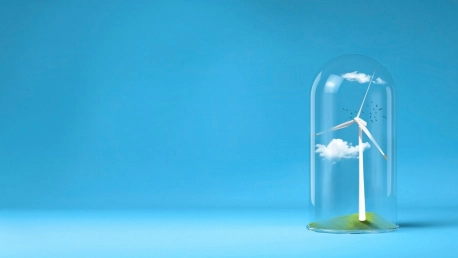As electricity needs grow alongside advances in manufacturing and AI, the U.S. Department of Energy’s “Future of Resource Adequacy” report confronts the task of meeting demand while cutting emissions. A reflection of the Biden administration’s investment goals, the document charts a course for the energy industry. It emphasizes the importance of innovation and development of robust systems capable of sustaining both the economy and the environment. This strategic plan is a cornerstone of ensuring a stable and sustainable energy infrastructure, focusing on the necessity to adapt to the evolving energy consumption patterns while adhering to environmental standards. Through a blend of modernization and policy reform, the DOE underlines the urgency of this transformation in the face of a rapidly changing energy paradigm.
Innovative Generation and Storage Solutions
New Frontiers in Clean Energy and Storage Technology
To maintain a stable and sustainable energy future, an eclectic mix of sources is essential. A DOE report highlights the importance of integrating clean energy generation, such as geothermal technology, with advanced storage solutions beyond conventional batteries. One innovative approach includes hybrid systems that combine different renewable energies to provide a more consistent power supply.Particularly promising is the development of long-duration energy storage, which has the capability to store energy for prolonged periods. This kind of storage is crucial for balancing the fluctuations in energy production that are inherent to renewable sources. It ensures that even during times when these resources are not actively generating power, such as when the sun doesn’t shine or the wind doesn’t blow, the energy supply remains uninterrupted. Investing in and advancing these technologies is key to a resilient energy infrastructure that is adaptable to varying supply and demand scenarios.
Upgrading Infrastructure with Cutting-Edge Tech
The Department of Energy (DOE) emphasizes the critical role of upgrading our existing power infrastructure to meet modern energy demands. Incorporating cutting-edge conductors into the grid can significantly enhance the efficiency of transmission lines. This enhancement reduces energy losses, thereby ensuring a higher percentage of energy harnessed from clean sources reaches consumers. Furthermore, the implementation of grid-enhancing technologies plays a pivotal role in revolutionizing our electricity network. These technologies pave the way for a smarter, more adaptive grid that can seamlessly adjust to fluctuations in both energy production and consumption. By fostering a power system that is both dynamic and intelligent, the DOE aims to facilitate the transition to a more sustainable and reliable energy future. This approach is crucial as we shift toward an era where renewable sources play a predominant role in our energy mix, ensuring that our infrastructure can manage these transitions effectively.
Demand-Side Resource Management
Energy Efficiency and Demand Response
Balancing energy supply with consumer demand is critical. The DOE highlights how energy efficiency can lead to substantial savings and reduced environmental impacts. Innovations like smart meters and real-time analytics are central to demand response initiatives which tailor energy use to meet grid conditions, especially during high demand. These technologies not only enhance grid reliability but also empower users to actively contribute to energy conservation efforts. As such, managing consumption through intelligent systems isn’t just beneficial for stabilizing energy grids, it also offers a path for individuals to engage in sustainable practices, influencing the broader goal of energy efficiency on a societal level. These strategies not only mitigate the immediate effects of peak demand but also promote a culture of energy consciousness and responsibility among consumers.
Virtual Power Plants and Consumer Incentives
Virtual power plants (VPPs) are emerging to manage distributed energy assets such as solar arrays, storage batteries, and controllable loads to stabilize the grid. The U.S. is seeing significant support from the Biden administration, with incentives like tax credits for clean energy installations and funds for solar panels and EV charging infrastructure, to encourage consumer engagement in grid stability and carbon footprint reduction.The Energy Department’s “Future of Resource Adequacy” underlines the plan for a resilient, affordable, and greener grid. This plan supports the nation’s growing power requirements in eco-friendly ways, facilitated by impactful legislation and financial stimuli. By blending solutions to address both energy production and consumption, the strategy outlines a comprehensive approach to foster a clean energy era for the U.S.









